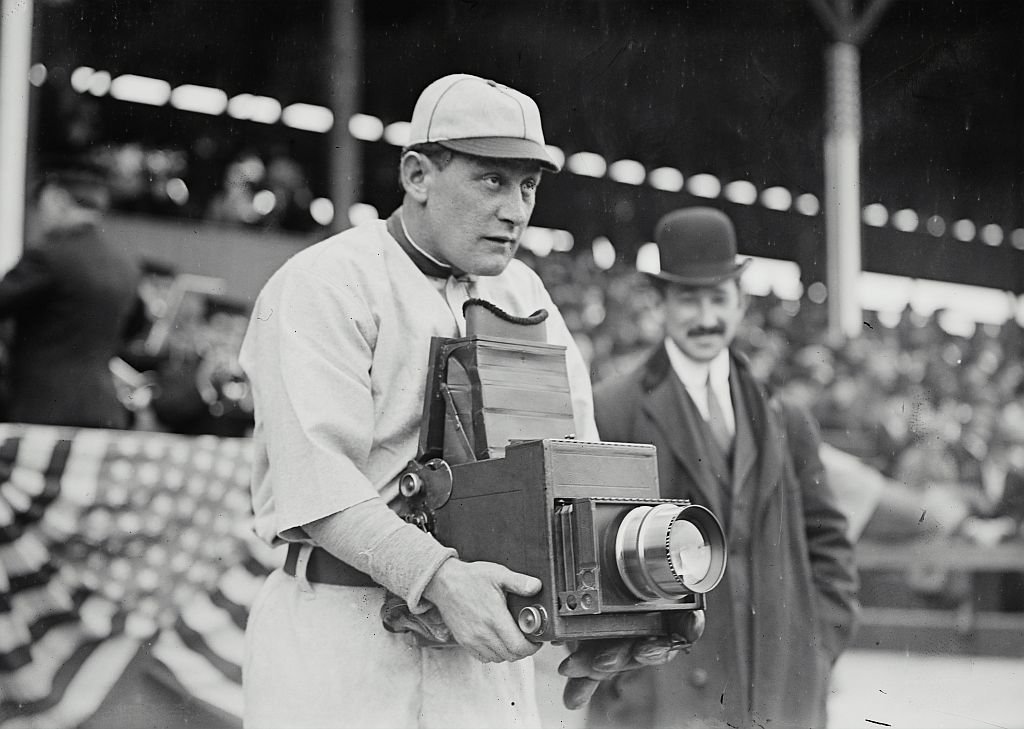MLB’s Outdated Local TV Rules Are Hurting Fans
Library of Congress / @librarycongress / via Unsplash
Major League Baseball has a problem. It isn’t a problem of attendance, talent, or even excitement — it’s access. While fans in other professional sports leagues enjoy a growing number of options to watch their favorite teams, MLB clings to a fractured, outdated model of regional blackouts, limited streaming options, and a confusing array of broadcast rights that actively push fans away rather than draw them in. If baseball is serious about growing its audience, especially among younger fans, it must overhaul its television and streaming policies to make it easier — not harder — for people to watch their favorite teams.
The Current System Is A Hot Mess
Fans across the country have long struggled with MLB’s labyrinthine system of local blackout restrictions and Regional Sports Networks (RSNs). Consider Kyle Mace, a Houston Astros fan living in Austin, Texas — 167 miles away from Houston. He’s in the so-called “local” TV market of the Texas Rangers (despite the fact that they play in Arlington - nearly *200* miles away), meaning he can’t watch Astros games on his local cable system (Houston RSN Space City Home Network is only available in Austin via vMVPDs DirecTV Stream or FuboTV), or even through the league’s vaunted MLB.TV out-of-market package, which claims both Texas and Houston as “in-market” teams subject to local blackout.
Mason Rebarchek, a Brewers fan domiciled in Winona, MN — just over the Western Wisconsin border — has an even worse experience. Even though he lives nearly four hours from Milwaukee (in the La Crossse-Eau Claire DMA), he is still considered within the team’s blackout zone. That means he’s blocked from watching Brewers games on MLB.TV while also being unable to watch via his local RSN (FanDuel North). The result? A dedicated fan who cannot reliably watch his team (though a new OTA announcement this week may help) unless he turns to illegal streams or a VPN to circumvent the system — neither of which should be necessary for a paying customer.
This convoluted approach contradicts MLB’s stated goal of growing the game. Younger viewers, already reluctant to subscribe to cable, face unnecessary barriers to engaging with the sport. Every blackout, every streaming restriction, every contractual barrier reinforces the message that MLB prioritizes legacy TV deals over fan accessibility.
A More Sensible Approach
MLB must adopt a more modern, fan-friendly approach to game broadcasts. The first and most obvious fix is eliminating archaic blackout restrictions for streaming customers. If someone is willing to pay for MLB.TV, they should be able to watch their desired team, regardless of where they live. The NFL, for example, has long recognized the value of making its games widely available through national broadcasts and flexible streaming options. MLB should follow suit.
Additionally, MLB should explore more direct-to-consumer local in-market streaming partnerships — like the ones the league has recently created for the Padres, Twins, Guardians, Diamondbacks, and Rockies in the wake of the collapse of the Bally Sports’ RSNs. Local fans who don’t have cable or a vMVPD should have the option to pay a reasonable fee for in-market streaming rights (offerings abound in the NBA and NHL), and fans outside of home regions would undoubtedly pay even more for the privilege.
Lastly, the league should more aggressively encourage the role of over-the-air (OTA) broadcasts with local TV stations, as multiple station groups have done successfully over the last two years with pro hockey and basketball. Even just a handful of local broadcast games can go a long way in extending the reach and cultural relevance of in-market teams, and give fans an incentivized “taste” of the action to promote future engagement opportunities via streaming subscription or even in-person attendance.
The Future Of MLB Depends On It
Baseball has always prided itself on being America’s pastime, but if it continues to restrict access to its product, it risks becoming a niche sport with dwindling influence. The sports landscape is evolving rapidly, and sports leagues that make their content easier to access — rather than locking it behind arcane “TV” rules of yore — will be the ones that thrive.
MLB doesn’t need to wait for more of its RSN deals to collapse before acting. It can take immediate steps to relax blackout restrictions, expand in-market streaming, and bring back more free-to-air broadcasts in strategic markets. Fans are not asking for handouts — they’re literally begging to pay for a product they love. It’s time for MLB to listen — and do so.
Local News To Peruse
With Affiliate Payments At Risk, Will Skydance Still Want To Own CBS? - Hank Price [TVNewsCheck]
FCC Begins First Phase Of Deregulation Efforts - Matthew Keys [TheDesk.net]
Milwaukee Brewers Announce 10 Regular Season Local, Free, Over-the-Air Broadcasts - Brett Taylor [Bleacher Nation]
Will 2025 Be The Year Some Local Stations Get Out of Local News? - Kirk Varner [TVND.com]
A Jackpot Awaits TV In 5G Broadcast - Preston Padden [TVNewsCheck]
Sinclair To Sell Five TV Stations To Ex-Bally Sports Sales Executive - Matthew Keys [TheDesk.net]
Getting “Busted”: New Multicast Network Launches - Terence Henderson [T Dog Media]


